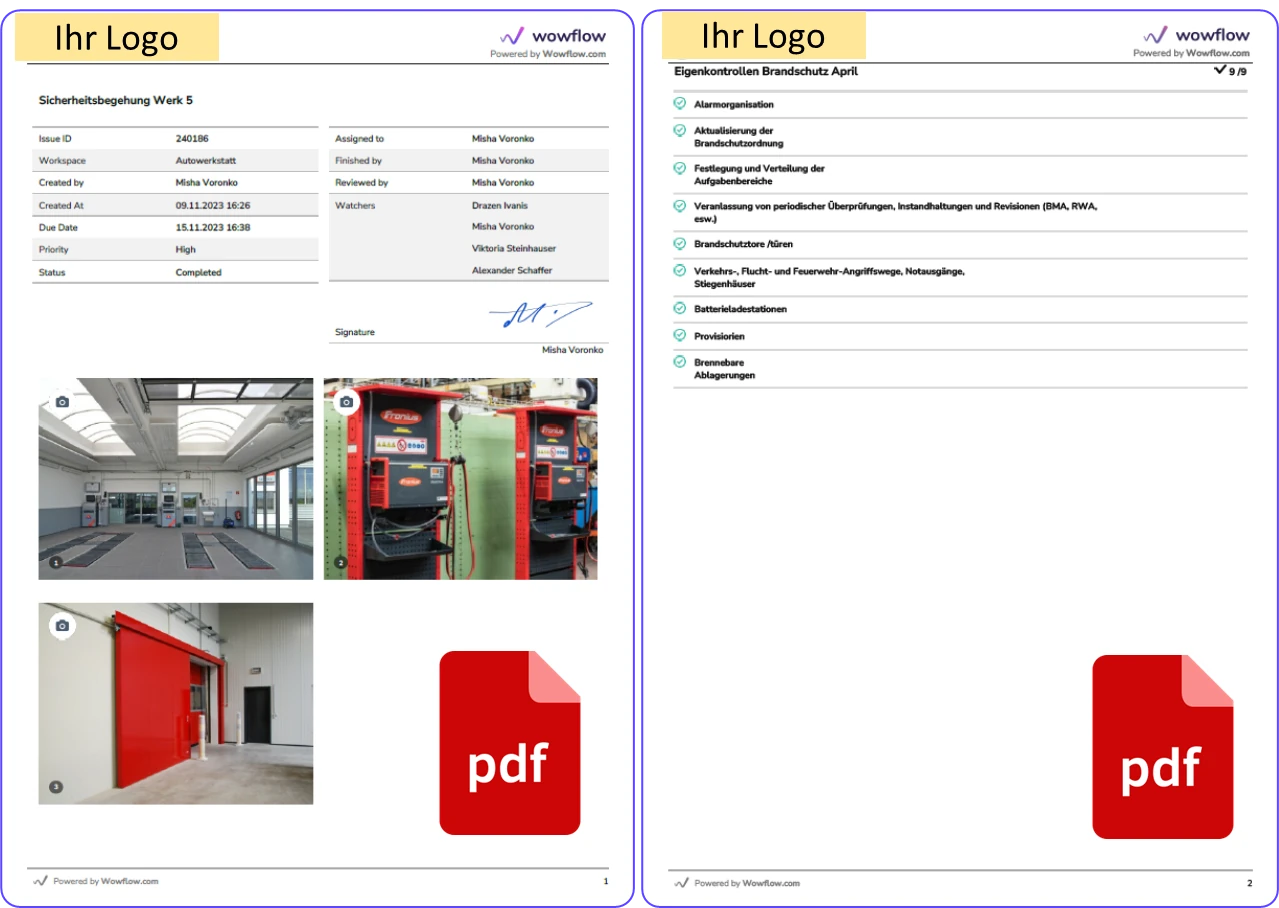Optimize the fire safety inspection process by using our helpful tips! From our article you will learn how to identify potential hazards, introduce improvements and efficiently document all vital aspects of your fire safety protocols.
This is an indispensable guide for successful fire safety inspections in every facility management scenario!
Download our fire safety inspection checklist and our in-depth fire safety inspection report completely free of charge!
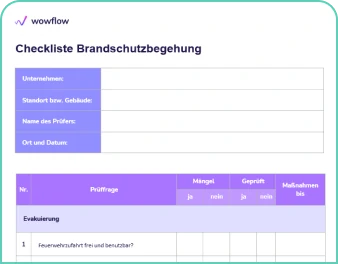
PDF checklist
The definition of fire safety inspection:
A fire safety inspection is an obligatory procedure aimed at identifying potential fire risks and hazards, so that appropriate preventive measures can be implemented. During that process, fire extinguishers, smoke detectors, escape routes and emergency exits are being thoroughly examined to identify and resolve any defects.
The outcome of a fire safety inspection is carefully documented by the fire safety officer. Proper, well-maintained fire protection documentation is therefore of the highest importance. It provides evidence of compliance with regulatory requirements.
Operator responsibility plays a central role in facilities management. Whether it’s administrative buildings, schools, hospitals or commercial buildings, regular fire safety inspections and complete documentation are crucial to ensure safety and compliance in facilities management.
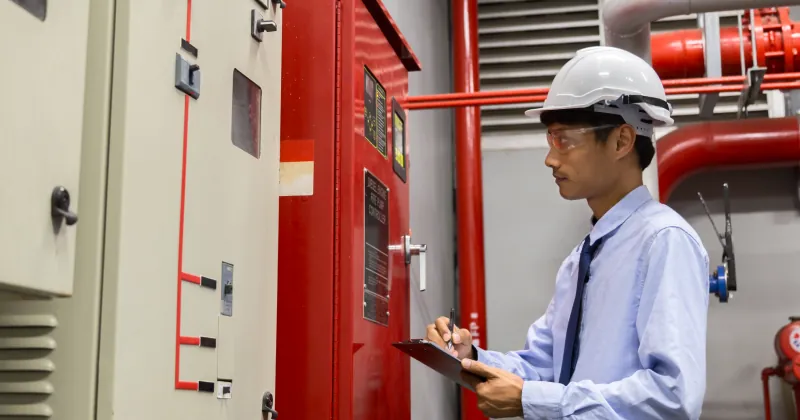
In accordance with § 10 of the German Occupational Safety and Health Act, in case of an emergency, the employer is responsible for preventing and fighting fires and evacuating employees and any other people from the premises. According to § 10 Abs. 2 ArbSchG, the employer must also appoint persons responsible for firefighting and evacuation in the event of a fire before the fire department arrives – those are the fire safety officers.
In addition, the employer must carry out fire safety inspections, implement preventive fire safety measures and review them regularly.
Regular fire safety inspections are part of occupational health and safety obligations and therefore the employer’s responsibility.
Important to note:
In practice, technical staff, such as facilities managers or building technicians, often complete the implementation of the measures in practice. For example, they take care of fire extinguishing and fire protection equipment or provide servicing for all the facilities.
By delegating these tasks to technical staff, part of the safety responsibilities is transferred to them.
As a rule, fire safety officers must receive a work order to carry out fire safety inspections.
The regulations in Austria are similar: Employers have to comply with §25 para. 4 of the Occupational Health and Safety Act and designate personnel to assume responsibility for evacuation and firefighting in case a fire occurs. This can also be done by a fire safety officer.
Switzerland has an equivalent to the German Occupational Health and Safety Act, which also regulates fire protection measures in workplaces: the SUVA-ordinances and the Accident Insurance Act.
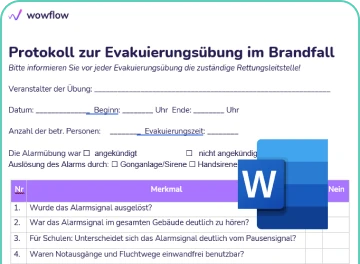
Structural fire protection: fire safety standards and regulations in different countries
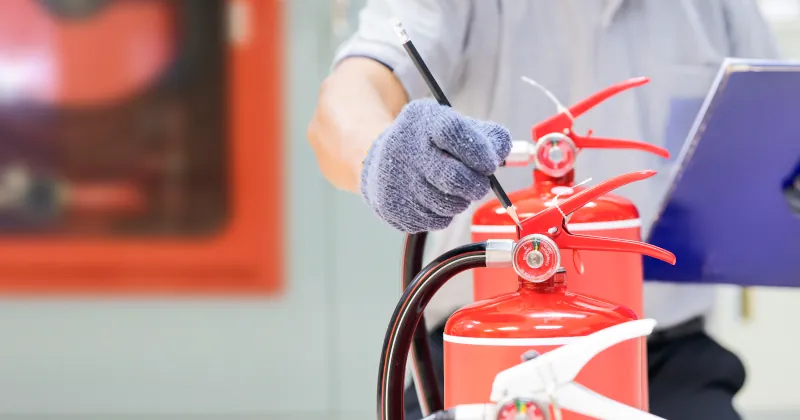
Are fire safety inspections mandatory?
Structural fire protection includes all measures to prevent and contain fires during the planning, construction, and maintenance of buildings.
The most important areas of structural fire protection include:
- Firewalls
- The creation of room layouts
- The connection of hydrants
- Escape routes
- Distances between buildings
- Testing the flammability of building materials
Being familiar with technical information about structural fire safety and implementing them is an essential part of building management.
- Technical facility management: Management and operation of building technology.
Fire protection standards and regulations
There are various legal regulations for fire safety inspections in the DACH region. Some regulations apply only in particular federal states, others nationwide or at the European Union level.
For Germany:
- Special regulations such as the Model Building Code (MBO)
- DIN 4102 (Europe-wide)
- DIN 14675 (Europe-wide)
For Switzerland:
- VKF fire protection standard (nationwide )
- VKF fire protection guidelines (nationwide )
For Austria:
- Regional regulations
- EU directive
- OIB guideline for fire protection (nationwide)
Who carries the fire safety inspections?
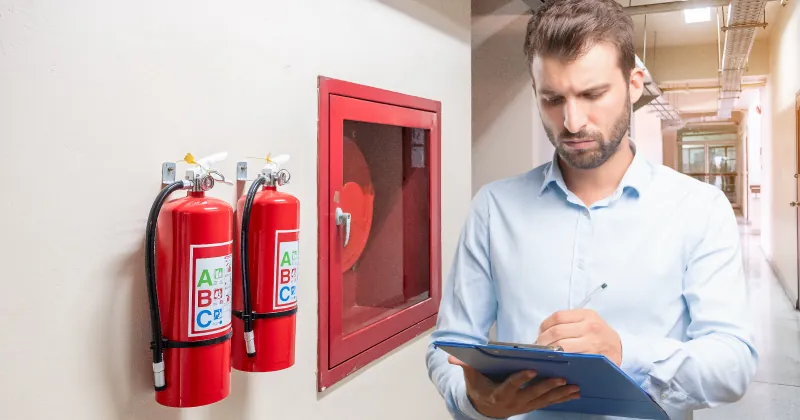
The employer or contractor is responsible for ensuring that fire safety inspections are carried out properly in their building.
He can entrust the responsibility of fire safety officer to internal employees, such as facilities managers, or external specialists.
Industry specific example: The facilities manager's role in fire safety
The facilities manager coordinates the inspection process and ensures that all persons involved, including technical staff or managers, are present.
Risk analysis is one of the tasks of a facilities manager. This involves identifying potential fire hazards in buildings and systems and assessing fire risks. Based on the risk analysis results, risk mitigation measures are developed.
During predictive maintenance, the facilities manager discusses necessary repairs or maintenance measures with the responsible technical staff for swift implementation.
During a fire safety inspection, the facilities manager ensures that the buildings and facilities are compliant with current fire safety regulations and that all fire safety equipment is in working order.
He also carries out regular evacuation drills and distributes fire safety information to all employees, while making sure that fire safety information is also available to outside visitors.
Use Wowflow to inform your employees about necessary fire protection measures!
How is a fire safety inspection carried out? 4 tips for efficient implementation.
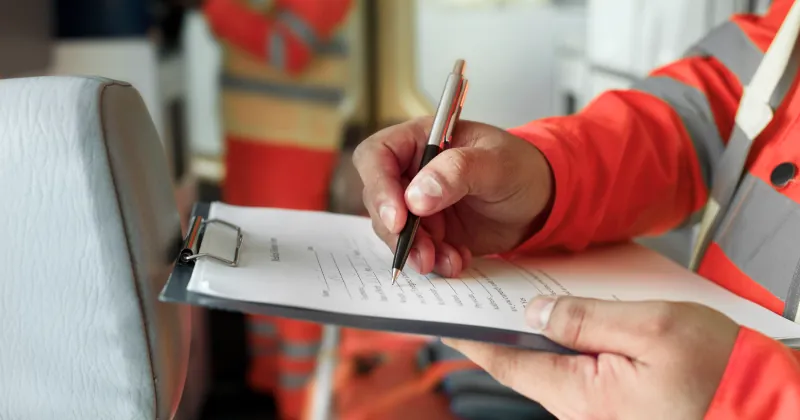
An effective fire safety inspection is essential to ensure a safe working environment for employees and to protect company property from potential damage. Discover 4 valuable tips for a successful fire safety inspection:
1. Use a detailed fire safety inspection template
The findings of a fire safety inspection must be documented. The result is a protocol, serving as proof of the fire safety equipment inspection being carried out, which is proof of fulfilment of the employer’s obligations towards relevant authorities and insurance companies.
In case of a fire, this protocol serves as evidence in court to clarify responsibility for a fire within the company premises.
It serves as the basis for drawing up a corresponding maintenance plan to rectify the discovered defects.
A solid protocol has to contain the following data:
- Date of the fire safety inspection
- List of controlled installations
- Name of all the participants
- Fire protection requirements
- Test results for each individual system
- Details about the discovered defects, planned date for rectifying measures and time of maintenance.
You can find our fire safety inspection protocol template below!
2. Use a detailed fire safety inspection checklist
Use detailed checklists to ensure that you thoroughly check all industry-specific aspects regarding fire safety and do not overlook any important measures.
A solid checklist will help you maintain a comprehensive overview of your company’s specific requirements, ensuring that all relevant points are covered.
You can find our fire safety inspection checklist here!
3. Pay attention to industry-specific aspects
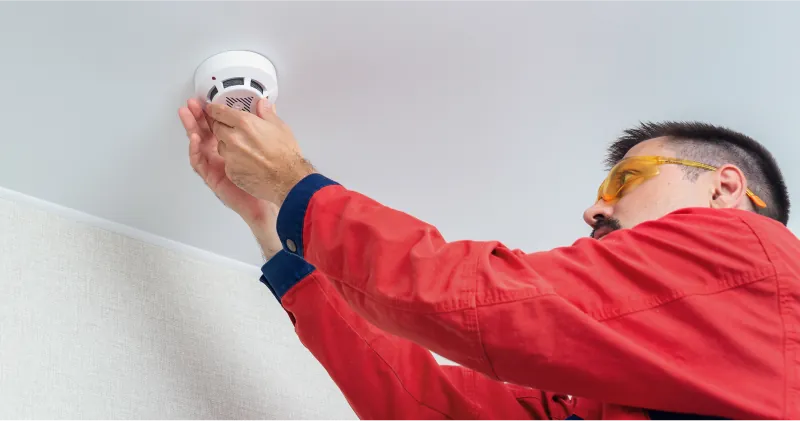
Depending on the working procedure, specific fire protection measures must be taken.
Office space:
- Assessment of fire protection in data centres and server rooms
Hospitals:
- Functionality of nurse call systems and evacuation chairs
- Inspection of emergency power supply systems
Industry:
- Checking the flammable materials storage for compliance with storage standards
- Inspection of industrial ventilation and gas detection systems
- Evaluation of explosion protection measures
- Inspection of fire hazards in painting enclosures and spray coating equipment
Specific fire protection measures can be found, for example, in the Hazardous Substances Ordinance (GefStoffV) and in other legal regulations such as the Ordinance on Industrial Safety and Health (BetrSichV).
4. Consult fire protection experts if necessary

In the case of complex or specialized systems, such as in a manufacturing plant, the fire safety officer can contact fire safety experts, such as representatives of the fire department or occupational health and safety, if necessary.
These experts have the required expertise and experience to assess the specific fire safety requirements and measures in such environments and make recommendations.
Working with fire safety experts can increase the effectiveness of the fire safety inspection, as they bring expert knowledge and an additional perspective to identify potential risks and recommend appropriate measures required to improve fire safety.
Use of digital solutions for optimal organization and documentation of fire safety inspections
Digital solutions make efficient implementation and documentation of fire safety inspections possible.
Use Wowflow for fire safety inspection measures
Wowflow offers a variety of functions to make the organization of your fire safety inspection easier:
- Photo documentation to identify faulty systems. Collect all measurement data and signatures for highly professional and complete fire safety reports. Create PDF reports with one click and send them to the relevant authorities via the Wowflow app.
- Use Wowflow’s advanced filter options to save your reports or upload them directly to your ERP/CAFM tool.
- Never miss a regular inspection again thanks to automated reminders.
- You can easily use the app to assign fire safety officers to carry out fire inspections. Maintain an overview of the inspection process with full transparency, even when contracting external service providers. Define deadlines, monitor processes in real time and receive automatic updates upon completion.
Are you looking for a digital solution to help you with fire safety inspections, providing you with documentation and organizational functionality?
Conclusion
An efficient fire safety inspection protocol is a vital part of facilities management. It makes it possible to identify potential hazards, take appropriate measures and ensure a safe working environment.
The use of checklists, protocols and digital solutions optimizes the process and contributes to efficient implementation.
By involving experts and carefully documenting the results, fire safety can be improved continuously.
Frequently asked questions
How often does a fire safety inspection have to take place?
If possible, a fire safety inspection should be carried out annually to check the condition of the fire safety systems and equipment in the building and to initiate any necessary repair measures.
Depending on the operating mode or in the case of particularly hazardous assets, a higher frequency, e.g. every six months, maybe advisable.
With Wowflow’s calendar view, you always have a clear overview over the next inspection due date or when your regular inspection is due.
When must a fire protection report be created?
A fire safety report is required for new buildings, alterations and special uses, and by order of the authorities.
What is meant by "building class"?
Depending on the building height and floor area, fire protection building classes are defined, describing the degree of fire risk to a property.
The MBO (Model Building Code) defines the building classes as “non-combustible”, “flame-retardant” and “normally flammable”. Different fire protection requirements apply depending on the building class.

